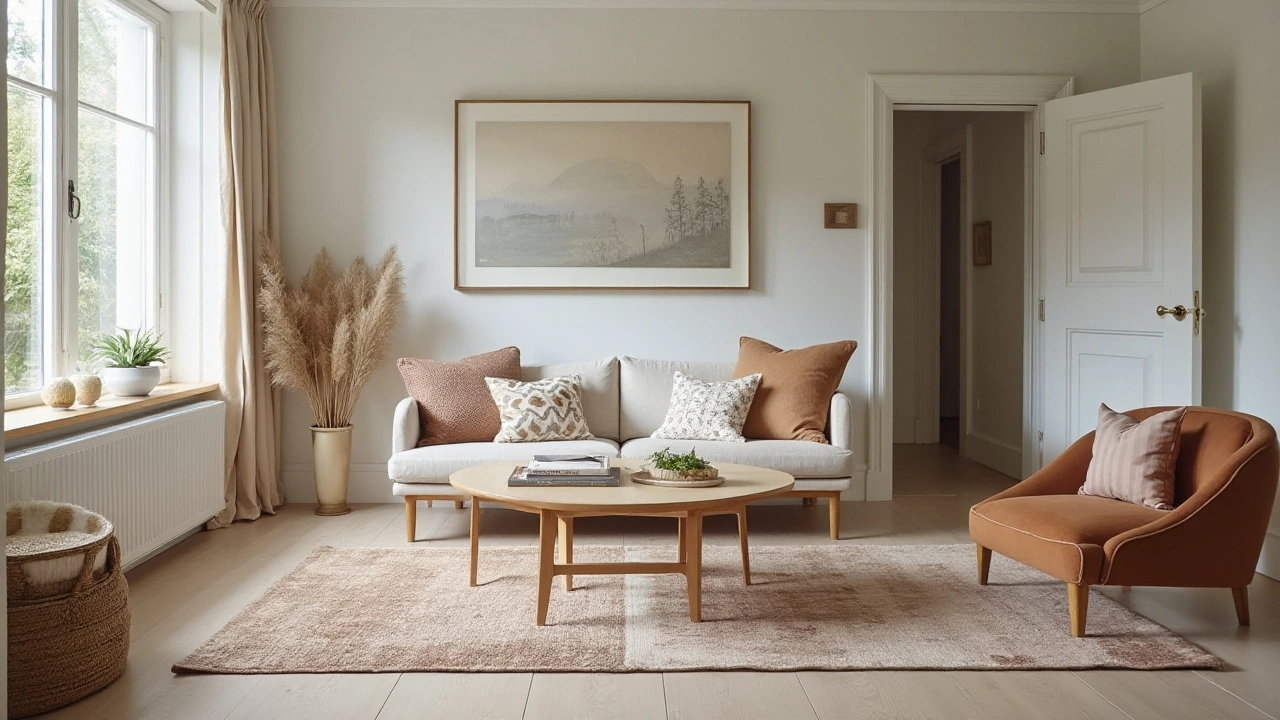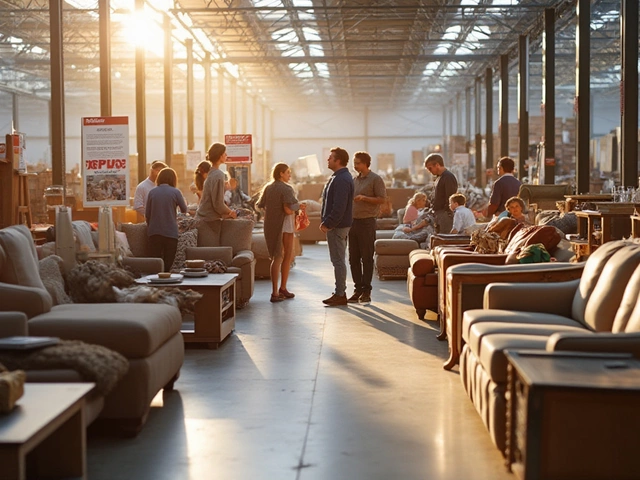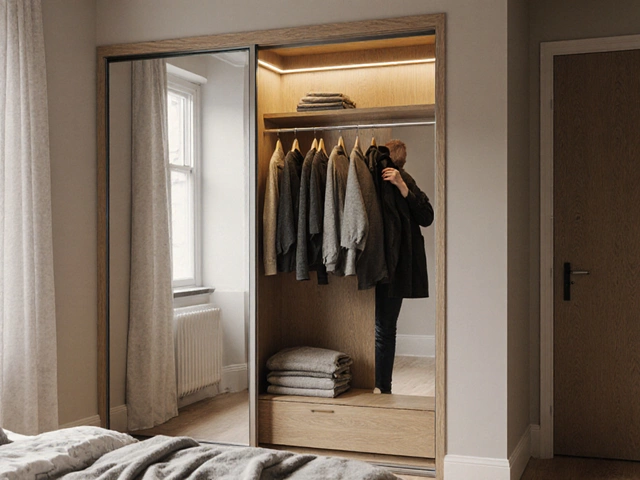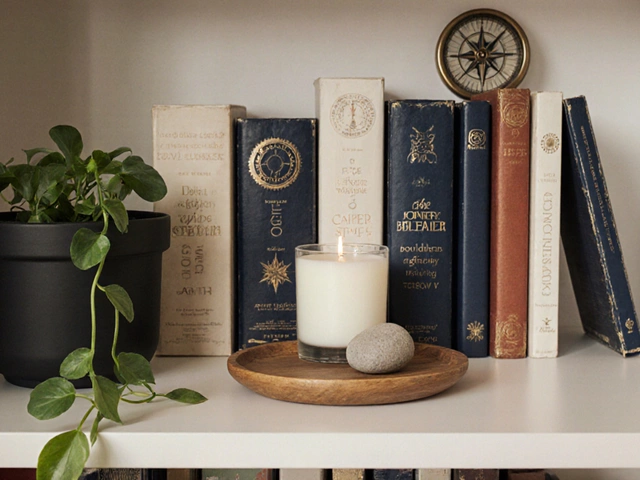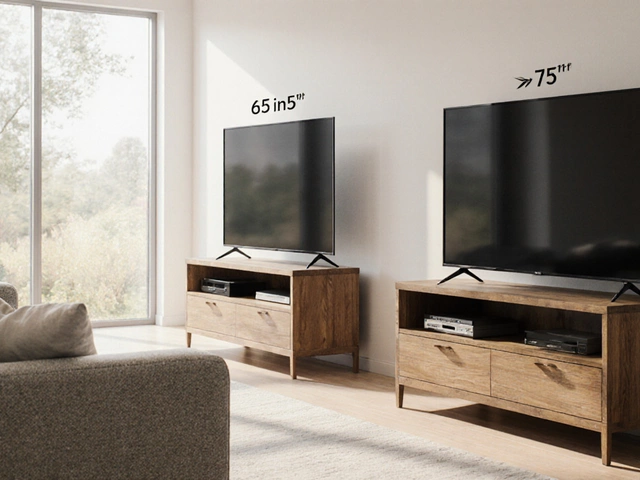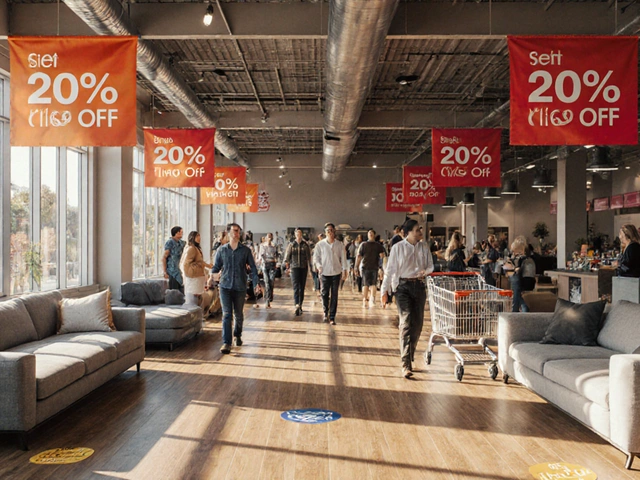Have you ever wondered how to achieve the perfect balance between aesthetic appeal and practicality in your living room? One often overlooked aspect is the placement of the coffee table in relation to your couch. The right distance can make a world of difference, offering an inviting space that is both stylish and functional.
In this article, we'll delve into guidelines for optimal spacing that ensures you can reach your coffee cup with ease without cramping the room's style. Whether you're redecorating or setting up a new home, understanding the nuances of furniture arrangement will help you create a harmonious living environment.
Join us as we explore the art and science of coffee table placement, providing insights and inspiration to tailor your space to your needs and preferences.
- Understanding Ideal Spacing
- Benefits of Proper Coffee Table Placement
- Measuring Your Living Room Layout
- Tips for Choosing the Right Coffee Table
- Creative Arrangements for Small Spaces
- Personalizing Your Coffee Table Setup
Understanding Ideal Spacing
Achieving the perfect living room setup involves more than a keen eye for design; it's about establishing a harmony between function and form. When it comes to placing a coffee table, the universally recommended distance is between 14 to 18 inches from the couch. This range is not arbitrary but has evolved through countless interior design practices, ensuring both accessibility and aesthetic appeal. Picture yourself reaching for a magazine or TV remote; anything closer can feel cramped while too far might have you stretching uncomfortably.
Why 14 to 18 inches, you may ask? This specific measure accommodates an average human's arm length, thus promoting a natural state of relaxation. But it's crucial to remember that one size doesn't fit all. Your living room's layout, the size of your furniture, and personal comfort preferences should all be factored in. A small apartment may dictate more compact dimensions, while a spacious setting might afford a bit more flexibility. As noted by renowned interior designer Kelly Wearstler, "Space is the breath of art."
"The space between furnishings should allow for both comfort and conversation," Wearstler elaborates, emphasizing the dual role of design in daily living.
In practical terms, creating the ideal layout begins with measuring your room and noting the furniture you intend to incorporate. Remember, the distance from the couch to the coffee table isn't solely about reachability—it also considers traffic flow. You wouldn't want your guests or family members to sidestep or awkwardly navigate around your living room layout. Such ergonomic consideration results in a setting that encourages social interaction while promoting movement ease.
While not everyone adheres to rigid rules, understanding these guidelines forms the backbone of an inviting home design. For those with eclectic tastes or specific lifestyle needs, adjusting the recommended distances can foster a room that mirrors their individuality. Indeed, the rules of interior decor are flexible, serving more as foundations than finite handbooks. For a customized approach, test out different setups and settle on what feels right. After all, your home is a personal haven, not a model showroom. Emboldening your choices with tested principles ensures both practicality and personal expression collide beautifully.
Benefits of Proper Coffee Table Placement
Arranging your coffee table at the optimal distance from your couch does more than just polish your interior's aesthetic. It plays a significant role in enhancing the functionality and flow of your living space. The perfect placement strikes a balance between style and usability, ensuring that everything you need is within arm’s reach without feeling cramped. Imagine smoothly reaching for a book from the table or resting a cup of coffee during a cozy evening without the uncomfortable stretch or awkward maneuver.
One undeniable benefit of having your coffee table well-positioned is the creation of a space that encourages easy conversation and social interaction. When placed correctly, it serves as a central point around which family gatherings or friendly chats can organically unfold. This becomes vital in designing spaces intended for relaxation and connection. Your living room becomes more than just a room; it transforms into a haven for cherished memories with loved ones.
A functional coffee table setup can also greatly contribute to an organized home. With the right placement, you can easily access and return items to the table, reducing clutter on nearby surfaces such as side tables or kitchen counters. This reduces visual chaos and contributes to a serene and inviting atmosphere in the living area. A neat room feels more inviting and can make a big difference during social occasions or just quiet personal time. According to interior designer Kelly Hoppen,
"Spaces require mindful design to cater not just to aesthetics but to daily needs and emotional wellbeing."This couldn't be truer when it comes to the unassuming placement of a coffee table.
Moreover, the right setup can cater to safety concerns, especially in homes with young children or pets. Keeping a secure distance helps prevent accidents caused by sharp corners or unstable items. It ensures the table is not too close to create hazards, yet close enough to maintain daily convenience. This safety aspect of proper coffee table placement combines practicality with peace of mind, allowing you to enjoy your living space fully.
Lastly, the right placement can visually improve the dimensions of your room. By adhering to golden rules of interior design, such as allowing at least 18 inches of space between the table and couch, you can make the room seem more spacious and well-proportioned. Whether you have a vast living area or a compact one, proper spacing creates an optical illusion of space, making your home feel open and airy. Not to mention, this consideration can greatly elevate the overall harmony and balance in your decor, effortlessly achieving a professionally-styled look without breaking the bank.
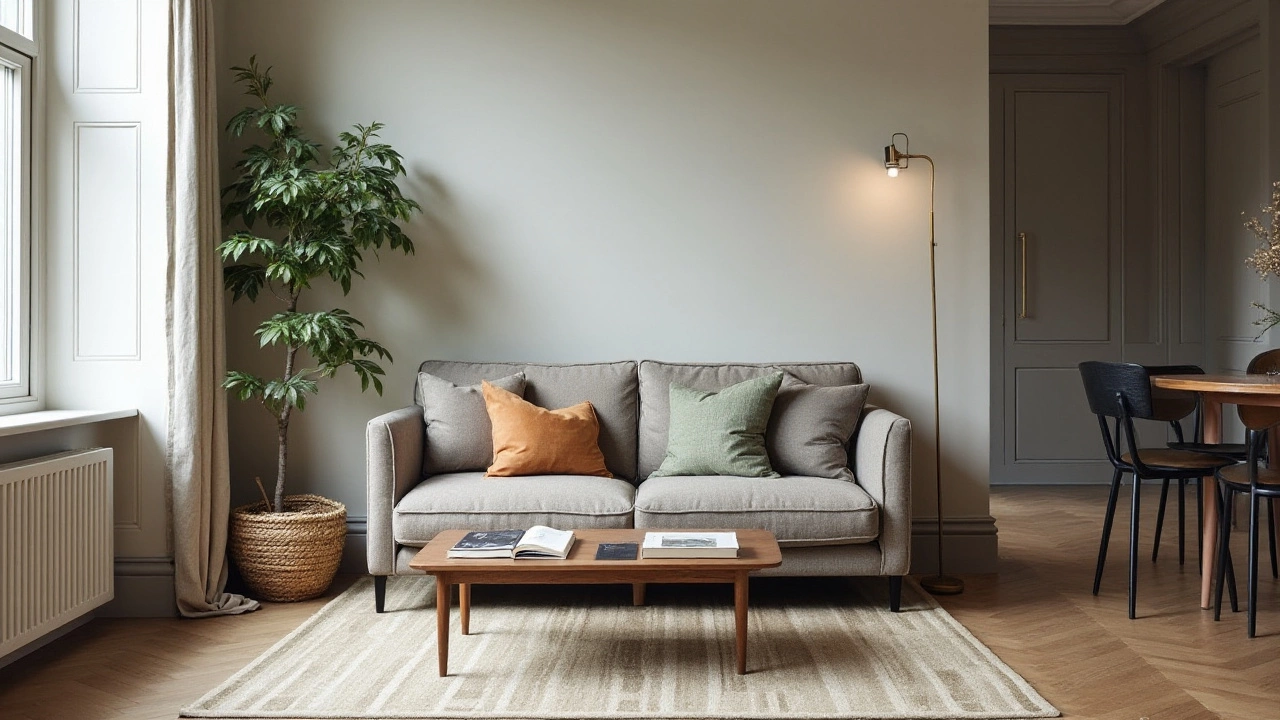
Measuring Your Living Room Layout
Creating a comfortable and visually pleasing living room starts with understanding how to measure your space effectively. Before embarking on rearranging or shopping for a new coffee table, it's important to assess the current layout of your living room. Start by measuring the distance from the couch to the TV stand or any central focal point. This first measurement lays the groundwork for understanding the available free space. Use a measuring tape to calculate the length and width of the entire room, jotting down the dimensions as you go. These initial figures will guide you in configuring your space, ensuring there’s room to breathe while cherishing the aesthetic.
After acquiring the room's dimensions, consider the pathways and seating arrangements. Avoiding cramped walkways is essential, so factoring in traffic flow can reshape your room's functionality. Typically, there should be at least 14 to 18 inches between the couch and the coffee table, allowing for easy access without having to overextend your reach. Consulting interior design golden rules can be beneficial; as Nate Berkus, a renowned designer, advises, "A coffee table should be close enough to set a drink down, but far enough that you can stretch out your legs."
With the measurements in hand, the next step is to create a scale drawing or use digital tools that can visualize your layout. Free software or apps like SketchUp can transform your room's sketch into 3D models, providing a bird's eye view of how your furniture interacts with the space. Play with placements, swap pieces around, and ensure that every segment of the room is equally inviting. A well-measured room where every inch is accounted for not only maximizes space but augments the enjoyment of your living area.
Don’t forget the importance of considering your furniture's size. Particularly in compact spaces, oversized units can dwarf rooms, making them feel enclosed. Balancing functionality with form avoids this pitfall and ensures that your setup embraces the room's natural dynamics. Measure each piece of furniture individually and evaluate how they align with each other. Contrasts and complements can be great guides in determining suitability. When assessing ideal furniture sizes, an invaluable tip is laid out through ergonomic insights, as contemporary studies suggest that custom-designed surroundings distinctively boost psychological well-being significantly.
Using the insights gathered from precise room measurements can help create a harmonious space, where the living room layout not only accommodates the essentials but also promotes ease of movement. The dance between utility and aesthetic pleasure is as much about achieving order as it is about offering comfort. As you measure and plan the space, remember that each dimension is a stepping stone toward creating an environment that resonates with your lifestyle and spirit.
Tips for Choosing the Right Coffee Table
Choosing the right coffee table is more than just a matter of picking a design you like. It involves thoughtful consideration of the size, shape, material, and functionality, which together contribute to how well the table fits into your living space. Let's begin by looking at the size. Ideally, your coffee table should be two-thirds the length of your couch—this proportion strikes a pleasing balance between prominence and practicality. A good rule of thumb is to maintain about 16 to 18 inches of space between your couch and coffee table to offer ample legroom while still keeping items within easy reach. When it comes to height, aim for your coffee table to be the same height as your couch’s seat cushions or slightly lower, which usually means around 16 to 18 inches tall.
The shape and style of your coffee table should complement the style of your living space. If your room is on the smaller side, consider a round or oval table, which can make the space feel less cramped, and there's also less risk of running into sharp corners. Rectangular or square tables, on the other hand, can provide a classic and chic look, ideal for larger rooms. If you frequently move furniture around to accommodate guests, a lightweight table is worth considering.
If you want your coffee table to serve as a functional centerpiece, opt for materials that not only match but also elevate your room’s current design aesthetic, as advised by interior designer Sarah Richardson in House Beautiful: "A coffee table isn’t just a table, it’s a statement piece."
Material choice is another key factor when selecting your coffee table. Wood offers a timeless and sturdy option that can add warmth to any room. Glass tables are great for opening up a space visually, allowing for an airy feel, and work well in a modern setting. Metal tables, on the other hand, offer sleek lines and a more industrial vibe. When it comes to functionality, think about how you plan to use the table. If extra storage is required, pick a table with drawers or a lower shelf. Coffee tables can be a great way to showcase personal style through decorations like books, decorative trays, or small plants, transforming your table into a multifunctional focal point in the living room.
Remember, the ultimate goal is to find a coffee table that complements not just your couch but your living room as a whole. The table you choose should support your lifestyle—whether that means being a landing spot for a cozy night watching movies or a showplace for your latest artistic collection. It's important to envision not just what a coffee table will look like in your space, but how it will be used day-to-day. A well-chosen coffee table satisfies both form and function, providing a delightful blend of style and practicality in your everyday life.
| Material | Style | Benefits |
|---|---|---|
| Wood | Classic/Warm | Durable, Timeless |
| Glass | Modern/Light | Visually opens space, Easy to clean |
| Metal | Industrial/Sleek | Durable, Modern aesthetic |
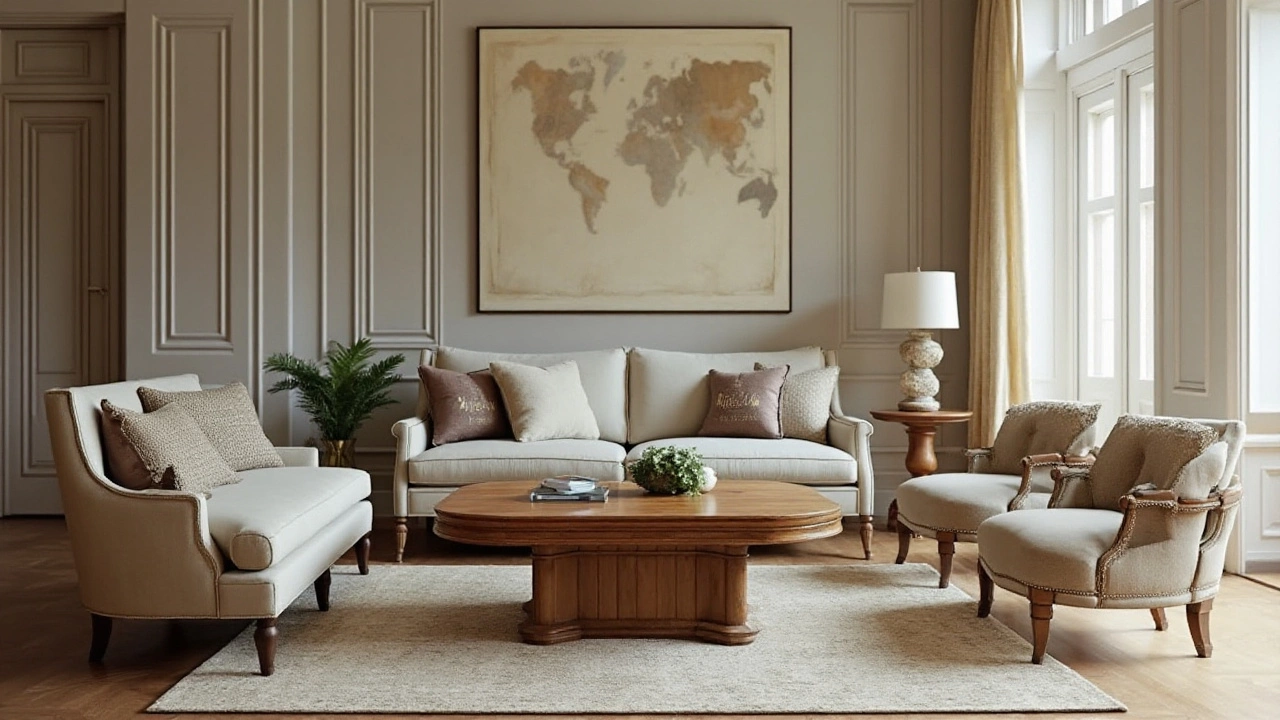
Creative Arrangements for Small Spaces
When it comes to maximizing a coffee table in a cozy apartment or snug corner of your home, creativity becomes essential. Embracing unconventional ideas can transform a challenging area into a refreshing space that breathes with style and comfort. In such settings, a minimalist approach can be as practical as it is appealing. Go for a sleek, low-profile table that captures the essence of simplicity without sacrificing function. Space-saving furniture is not only trendy but also enormously useful. Consider opting for an oval or round coffee table to ease movement around it and eliminate sharp corners that can be hazardous in tighter quarters.
A thoughtful arrangement should factor in not only the furniture itself but also how it interacts with the rest of your decor. A small-scale table can be paired with multi-functional furniture like a loveseat or a compact modular sofa system. Playing with dimensions and coordinating furniture pieces can create a dynamic visual field that tricks the eye into perceiving a larger area than actually exists. When selecting a table, the color and materials should harmonize with the existing palette. A glass tabletop, for instance, can offer an airy feel, creating an illusion of extra room.
Your choice of accents can further enhance these creative arrangements. Tucking convenient storage baskets beneath the table will keep the area tidy and organized, especially in living rooms pulling double duty as a home office or play area. Floating shelves above the setup can house decorative items or books, liberating precious floor space. For tiny homes, incorporating a lift-top coffee table design can be an ingenious solution, as it doubles as a desk or dining surface while accommodating storage beneath. It's all about marrying elegance with usefulness, adapting each element of your living room layout to elevate the available space.
"The smaller the room, the more opportunity for design ingenuity," says Emma Barrett, an expert in compact living. Innovative Interior Living Magazine.Embracing multipurpose design opens up a creative dialogue with your surroundings, encouraging daily routines within the frame of minimalism. Be mindful of your movement through the area, ensuring pathways remain clear, as this encourages a sense of fluidity and openness. Strategic placement of mirrors can also amplify light distribution and offer a sense of expanded space.
Adopting a layered lighting scheme adds depth and dimension, transforming even the smallest of living areas into a cozy haven. From floor lamps to pendant lights, varied lighting creates focal points and accents that invite comfort and warmth. By experimenting with textures and materials, such as plush rugs or cool metal finishes, you can invigorate your environment without clutter. Celebrating unique, living room layout solutions can uncover unexpected charm and practical elegance in some of the most unlikely spaces. Indeed, small areas can inspire big ideas.
Personalizing Your Coffee Table Setup
When it comes to making your living room truly unique, your coffee table can be a canvas for personal expression. More than just a functional piece, it can tell a story about who you are. From family heirlooms to contemporary art, the items you choose to display can add character and warmth. Consider including elements that resonate with your personality and interests. For instance, if you're an avid reader, a stack of your favorite books can add intellectual appeal. Similarly, displaying pieces from your travels can evoke cherished memories and spark conversations with guests.
Creating a cohesive look is essential, so think about what colors and materials reflect your style. A blend of textures, such as a soft woven cloth next to a sleek metal sculpture, can add depth and intrigue. Similarly, using a mix of sizes and heights will create a visual journey. Maximize the space by ensuring each item complements the overall color palette of your room. One design trend suggests grouping items in odd numbers, like threes or fives, for an aesthetically pleasing balance. In this way, you'll make the most of the space while keeping it stylish and organized.
Functional Decor
Your coffee table setup doesn't need to sacrifice function for design. Thoughtfully organizing key items such as remotes, coasters, and magazines in a decorative tray can keep the space tidy and accessible. Incorporating functional decor—like using a beautiful bowl as a key holder—can enhance usability without cluttering the table's surface. Additionally, tactile elements such as a novel wooden sculpture or a fabric runner can invite touch, subtly encouraging interaction with your curated collection.
Don’t shy away from adding plants or flowers to breathe life into the room. A succulent or a seasonal bouquet can invigorate your space, adding a touch of nature indoors. As Albert Hadley, a renowned interior designer, succinctly put it, "Design is the art of making space play multiple roles."
"A well-organized room challenges no eye, but everyone who enters it will appreciate its lack of confusion," an axiom relevant to both ornamental and functional decor strategies.Incorporate Technology
Fast-forwarding into modern times, integrating technology into your coffee table setup can impress tech-savvy guests. Consider placing a smart home device or a wireless charging pad seamlessly within the decor. This strategy ensures your living space is not only beautiful but also up to date with the current technological trends. Many coffee tables now come equipped with built-in docks and connectivity, combining both style and utility. It's becoming increasingly common to see tables doubling as entertainment hubs or workspaces, reflecting a modern lifestyle.
For those concerned with sustainability, sourcing eco-friendly furniture made from reclaimed or sustainably harvested materials is another way to personalize your table setup. Personalization through sustainability not only mirrors ethical values but also serves as a conscious design statement in your home—a wonderful convergence of style and responsibility.
